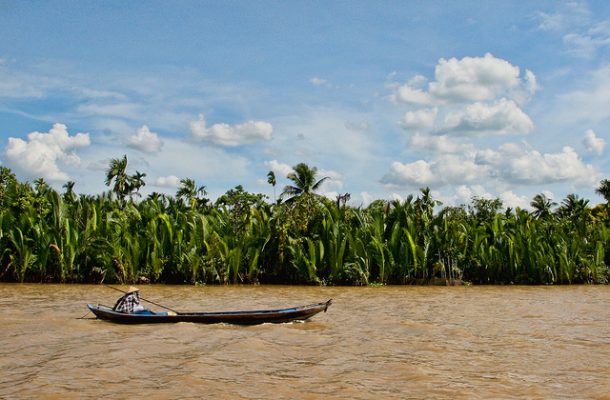Southeast Asia’s looming drug crisis threatens regional security

This week, the United Nations Office on Drugs and Crime (UNODC) released its much-anticipated report on synthetic drugs in East and Southeast Asia.
For the most part, UNODC assessments tend to be rather conservative, which ought to make the revelations contained in this report of even greater concern for Australian authorities.
In short, it makes clear that regional law-enforcement efforts have failed to curtail the unprecedented growth in the production of synthetic drugs like methamphetamine in the Mekong subregion.
In 2017, authorities seized 82 tons of methamphetamine in East and Southeast Asia—a new record. By the third quarter of 2018, that record had already been surpassed, with seizures totalling 116 tons.
While these seizures are without doubt impressive achievements, other data contained in the report suggests that they’re hollow victories. There’s been no corresponding change in the purity of methamphetamine at the retail and wholesale levels in the region, and the price for methamphetamine across the region has dropped dramatically over the past two years.
The UNODC reports that the wholesale price of 1 kilogram of methamphetamine in Vietnam dropped from US$13,500 in 2016 to US$8,000 in 2017. The number of clandestine methamphetamine laboratories dismantled each year by law enforcement in East and Southeast Asia has declined by 75% since 2015.
Despite the record busts, it appears that organised crime groups in the Mekong subregion, which includes Vietnam, Cambodia, Laos, Myanmar and Thailand, have been able to maintain an uninterrupted illicit drug supply chain across the region and beyond.
The back story for this new trend lies in the dynamic changes in the global supply of illicit drugs and user demand. Over the past several years, opium cultivation in Afghanistan has risen to record highs.
This has resulted in a global oversupply of heroin, which, along with declining user numbers, has led to lower prices and profits. It comes as little surprise, then, that as Afghanistan’s poppy cultivation increased, Myanmar’s decreased.
While the heroin supply-and-demand dynamics played out, there was also a significant shift in global illicit drug user preferences. Users have decreased their consumption of most plant-based substances (specifically, heroin and cocaine) in preference for synthetic drugs such as opioids, methamphetamine and MDMA (ecstasy).
Seizing on the opportunities presented by these changes, organised crime groups in the Mekong region have moved their focus from heroin to the production of synthetic drugs. These groups have leveraged the relative safety of the ungoverned territories in Myanmar.
They’ve also been able to secure a cheap and reliable supply of drug precursors from the global chemical and pharmaceutical industrial hubs in China and India. With the decline in poppy production, criminal groups have access to the unskilled labour they need for manufacturing and shipping their drugs. More recent regional drug trends indicate that these groups have scaled up their production using industrial-sized labs.
The whole process has been made even easier by new-found access to markets provided by China’s Belt and Road Initiative. To be fair, it wasn’t the new infrastructure that created this access, but rather the absence of the necessary legislative and policy security frameworks to manage sovereign border points.
In October 2010, ASEAN released its masterplan on ASEAN connectivity. This cross-pillar mechanism aims to enhance economic integration across the region. Upgraded physical infrastructure will enable greater volumes of people and goods to cross borders, and the harmonisation of policy will make crossing borders easier and quicker. The region’s increased focus on economic integration is generating new challenges for border security controls.
With all this new-found connectivity, the problem of methamphetamine production and consumption in the region could worsen. This is a point not lost on Thailand, the current ASEAN chair, which is standing on the proverbial burning platform. It’s next door to a global illicit drug production hub, which presents a threat to regional security and the rule of law.
On 25 February, the government of Thailand and the UNODC initiated a strategic partnership to develop a ‘roadmap’ to ‘consolidate steps the region can consider to improve border policies, investments, and operational capacities in support of regional political security and economic agendas’.
The Australian government needs to consider three issues in light of the UNODC’s latest report and Thailand’s efforts to improve regional border control.
First, as an ASEAN dialogue partner, Australia should offer material support, including access to subject-matter expertise, to Thailand and the UNODC for the development of the border management roadmap.
Canberra should also examine opportunities to support the enhancement of existing border initiatives along the Thai–Myanmar and Thai–Laos borders. One program that has shown promise is the border liaison office network.
Finally, Australia should look to expand its law enforcement and border security capacity development efforts in Laos and Myanmar.
The UNODC’s latest report provides the clearest evidence to date that the region is facing a methamphetamine crisis. Without new strategies and multilateral efforts, the problem will grow. The regional drug crisis provides an opportunity for Australia to work with ASEAN authorities to strengthen border controls that could disrupt illicit drug supply chains.
This article was posted by The Strategist.
John Coyne is the head of the ASPI border security programme. He spent 20 years as an intelligence professional at tactical, operational, and strategic levels across a range of military, regulatory, national security and law enforcement organisations, primarily in the ASEAN region.















